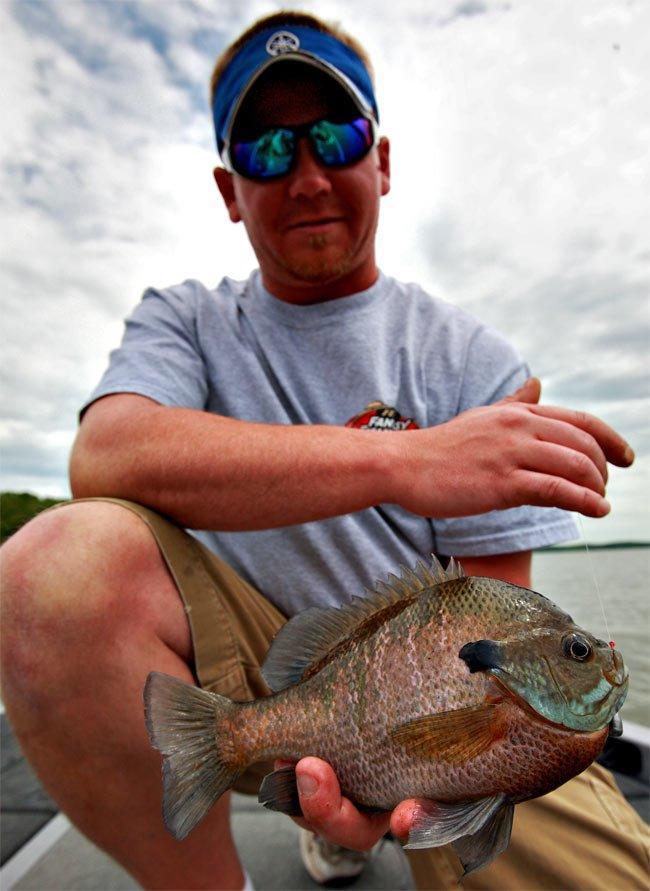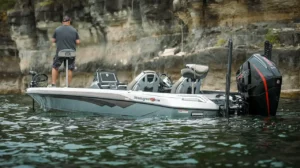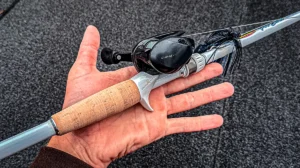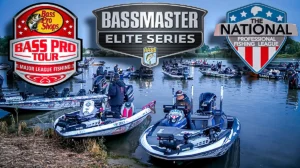Odds are that every day you pass lakes and ponds with bass populations that rarely see a lure.
The numbers of fish in many of these waters can be good, even astounding! But it’s not at all unusual to find bass abundant but the average size only about 12 inches – and sometimes considerably smaller.
These lakes are great for working on techniques, testing new lures and tackle, honing skills, and introducing newcomers to fishing.
Often they are great for something else, too!
Big bluegill is the name of the game
“Show me a lake with a ton of stunted bass, and I’ll be there fishing for bluegill,” said Nate Herman of Herman Brothers Pond Management of Peoria, Ill., recently.
Herman understands the dynamics of fish populations in small waters in ways the rest of us can’t imagine. Creating and managing ponds and lakes is his business.
Bluegill and other members of the sunfish family often comprise the bulk of the diet of bass. When the predator-forage ratio tips too heavily toward predator numbers, most sunfish become “bass hors d’oeuvres” before they’ve had a chance to grow beyond the fingerling stage.
But I said “most,” not all!
Those ‘gills that outgrow the maw of those cookie-cutter mini-bass often reach hand-size dimensions and beyond!
On-the-water proof
Decades ago, I observed this on an 8-acre impoundment an old school friend owned in southwestern Michigan. His bass population had exploded, and, though we got a number of 1-3/4 to 2-1/2 pound bass per day, we easily caught 20 or more bass 10 inches or under between them.
But, man, we did catch some handsome redear sunfish, too. Giant, thick-shouldered specimens that made you stop and admire!
I witnessed the phenomenon again yesterday on a residential development lake in northern Illinois.
Casual conversation found that it was loaded with small bass. And indeed it was! In half a day of fishing, we caught 104 largemouth.
But, having anticipated this “small bass/big gill” dynamic, we had brought along a pair of ultralight rods rigged with a tiny feathered jig and a Berkley Powerbait Honey Worm beneath small floats.
Those light wands netted us nearly 40 bluegill, and there wasn’t a runt in the bunch!
Float ‘n’ jig rig
The lures we employed were tiny hair jigs, 1/32 to 1/16 ounce, with sparsely trimmed red squirrel hair. They measured less than an inch long – probably 3/4-inch — from the jig nose to end of the hair.
We tipped them with Berkley Powerbait Honey Worms.
“When targeting panfish, you want to keep that bait small,” said my angling buddy, Mike Albano, who introduced me to the rig. “Often I will use only half a Honey Worm when the bite is light, to make sure they take the whole bait.”
I used a 3/4-inch pear shape bobber; Albano a pear-bodied stick bobber.
My ultralight combination was a Pflueger Patriarch reel on a five-foot ultralight Quantum PT Energy rod.
I added “range” to the rig by using 3-pound test Berkley Nanofil line. It enables tremendous casting distance, and has proven problem-free to date – an amazing claim if you’ve thrown a lot of tiny baits and rigs on extremely light line.
Float tip: Go with small bobbers or elongated bobbers that offer very little resistance when the fish hit your rig. Leave those big red and white beach ball bobbers at the beach!
Where to angle
Many residential development lakes are bowl shaped with minimal structure. They do, however, offer readable shoreline features.
Look for bass and bluegill alike to congregate in spring on moderately hard bottom areas, particularly those near docks, trees, sunken cover, and, when available, not far from healthy and relatively sparse vegetation.
Troughs at the bottom of sea walls often hold fish, and occasionally big bass, especially when brush or other cover enhance the habitat.
Target, too, areas that transition from rock to sand and other favorable combinations.
Gotta love ’em
So take advantage of those mini-bass factories. Use them as practice fields and places to introduce new anglers to the game.
But bring along a “gill-ready” ultralight rig along as well to add some variety and extra fun.
And, note one thing more…these lakes almost always hold a few monster cannibal bass, too!












